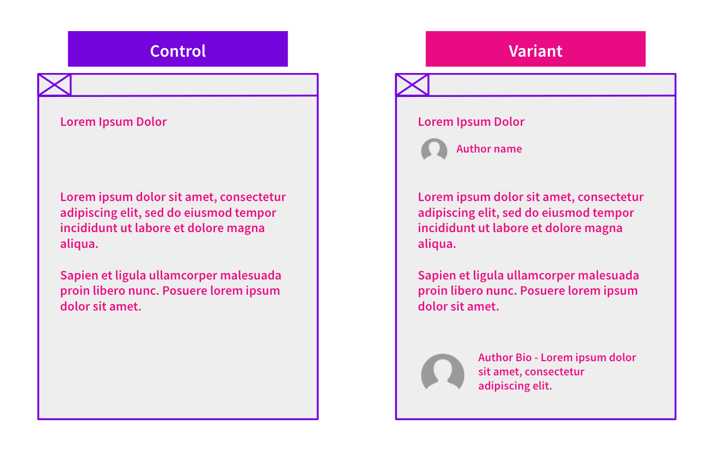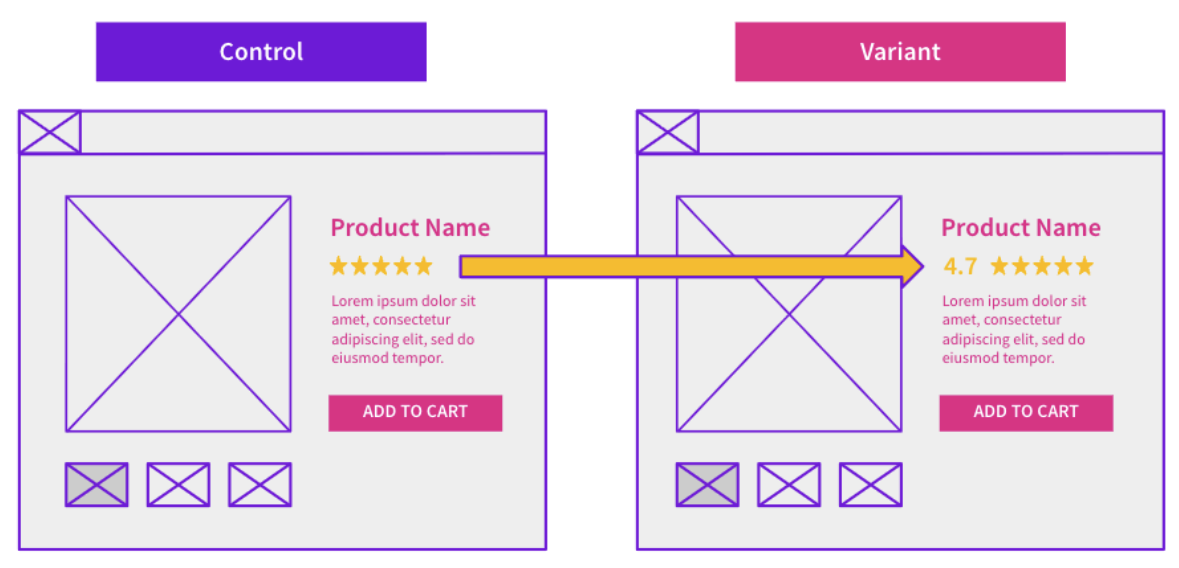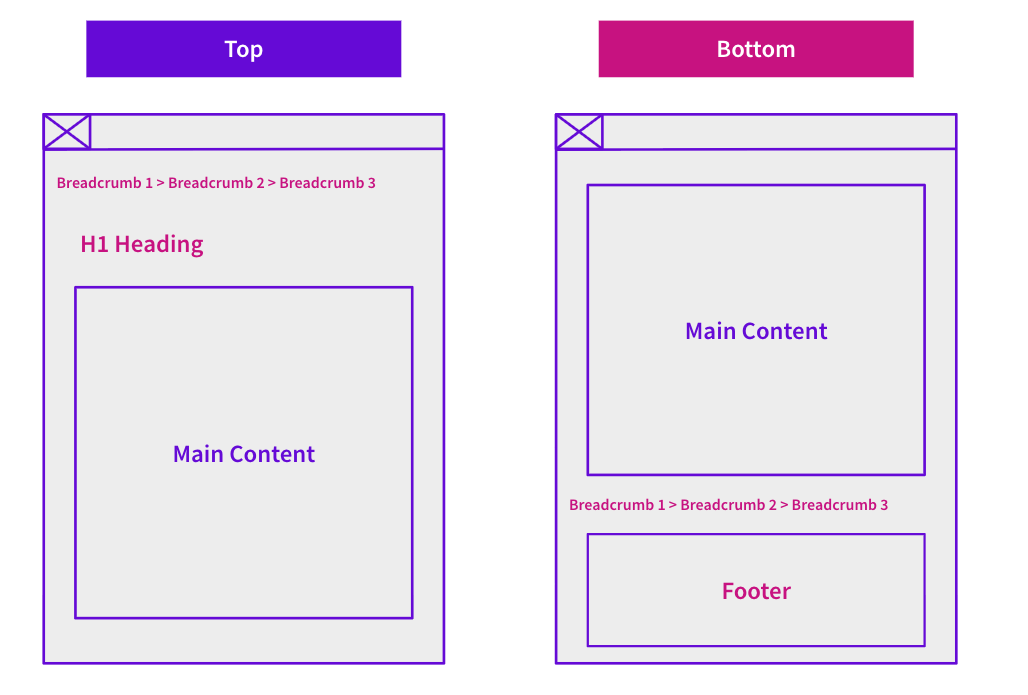Start here: how our SEO split tests work
If you aren't familiar with the fundamentals of how we run controlled SEO experiments that form the basis of all our case studies, then you might find it useful to start by reading the explanation at the end of this article before digesting the details of the case study below. If you'd like to get a new case study by email every two weeks, just enter your email address here.
For this week’s #SPQuiz, we asked our followers what they thought happened to organic traffic when a customer added authorship content to improve their pages’ E-A-T signals. Here’s what they thought:
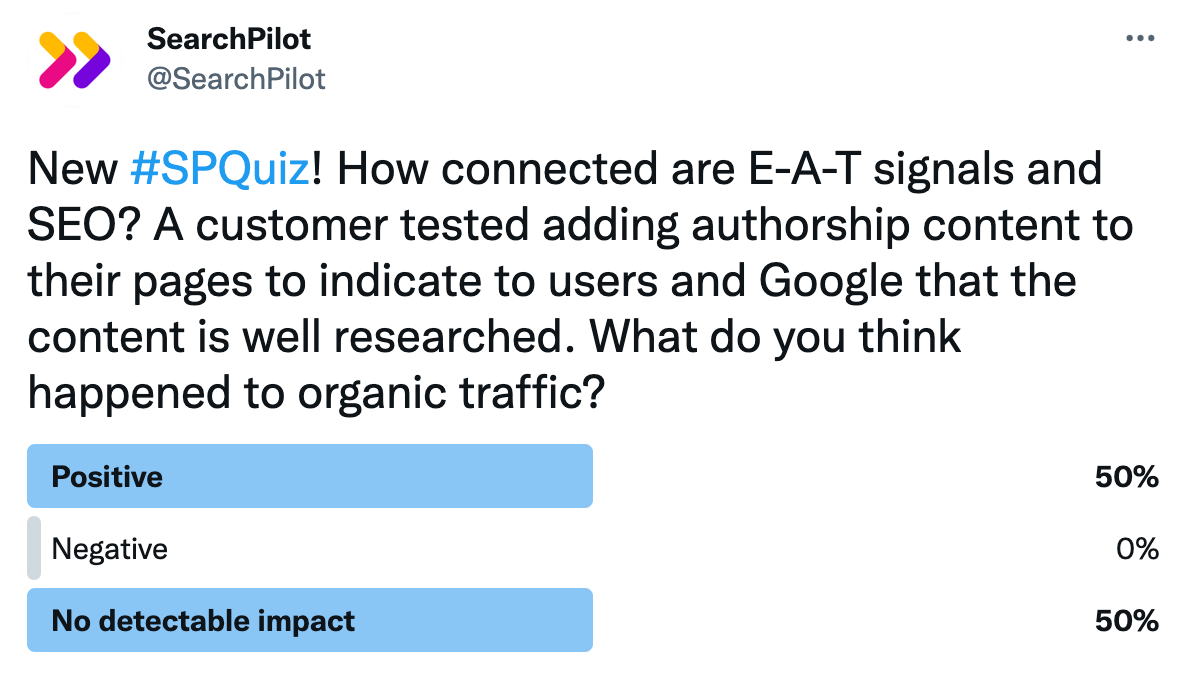
All the votes this week were evenly split between this change having a positive impact or no detectable impact on organic traffic. Were half of the votes right? Or was everyone wrong? Read the full case study below to find out!
The Case Study
When users turn to search engines, Google’s core belief is that they are looking for quality content that matches their intent. According to Google’s search quality rater guidelines, a key factor that plays into what Google considers quality content is what they refer to as E-A-T signals, or expertise, authoritativeness, and trustworthiness.
E-A-T signals are especially important when it comes to content that is characterised as Your Money Your Life (YMYL) or any content that can influence and potentially have a direct impact on an individual as it relates to finances, physical health, safety, and general wellbeing. Google has noted that creating content to improve E-A-T signals can help to better align content with ranking factors that could potentially give your pages a better chance at increased organic traffic.
Given the connection between quality content and E-A-T signals, a customer in the review space wanted to test adding authorship content to their pages. Since their product content was based on market research, they hypothesised there was an opportunity to signal greater expertise in the content by providing information on the individual who researched and wrote the piece. They hypothesised that adding authorship content could positively influence rankings and thus increase their pages’ organic traffic.
We ran this test two different times. The first test included a byline at the top of the page which had the author’s image and name. At the bottom of the page, and after the main content, there was a larger image of the author and a bio describing their credentials and work.
Below are what the control and variant pages looked like. Overall, the change to the top of the page barely pushed down the main content, if at all.
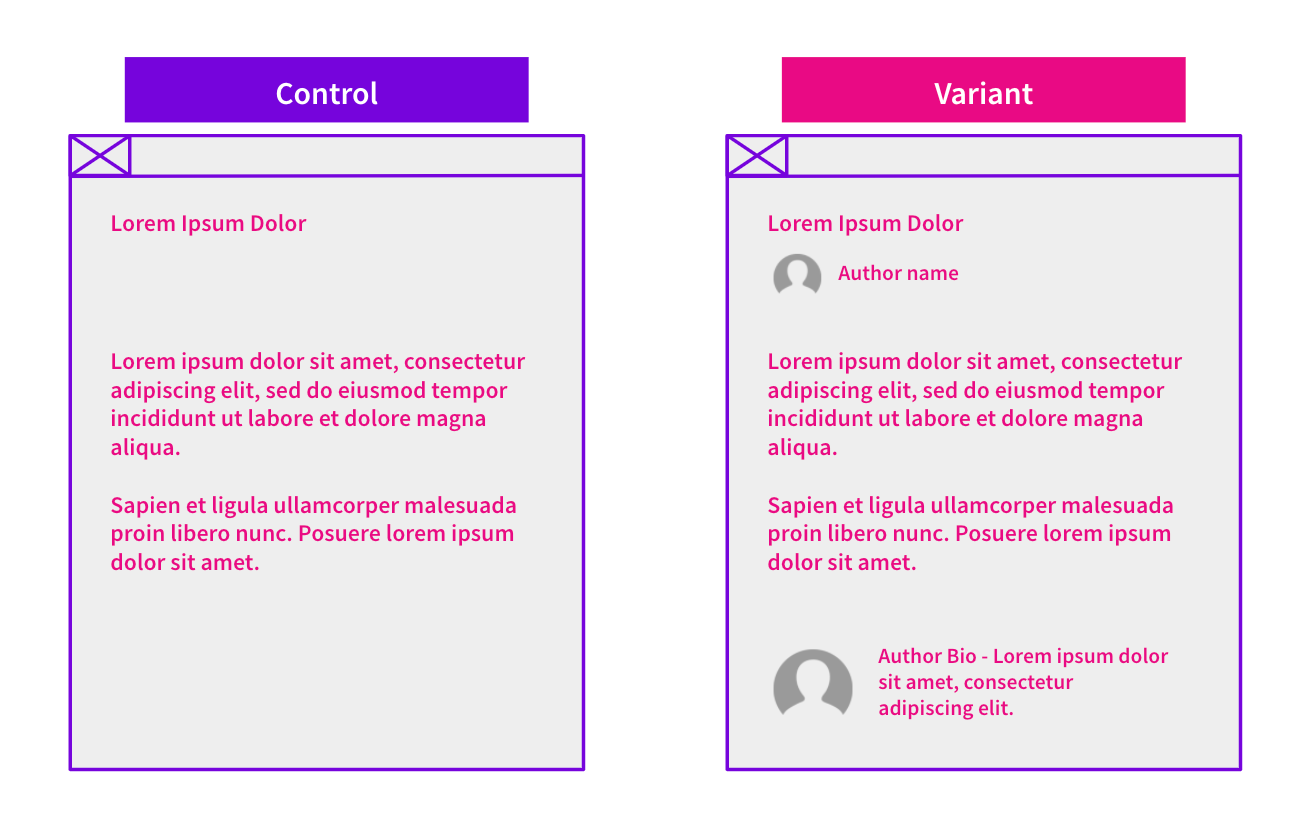
This is how the first test played out:
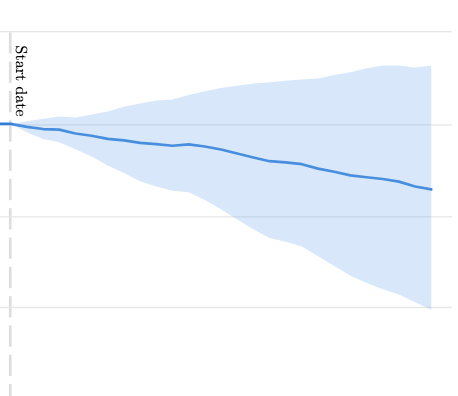
To our surprise, this first iteration yielded no detectable impact to the pages’ organic traffic. Our analysis showed that if anything, there was more likely a small negative impact than an uplift.
Since we felt we had a strong hypothesis for the test and knowing the results for the first test, we decided to perform a retest to confirm the results. For the second iteration of this test, we adjusted the top content so that the byline was smaller in font size and did not include an image of the author; the bottom content with the author image and bio was left unchanged from the first test. Here’s the result:
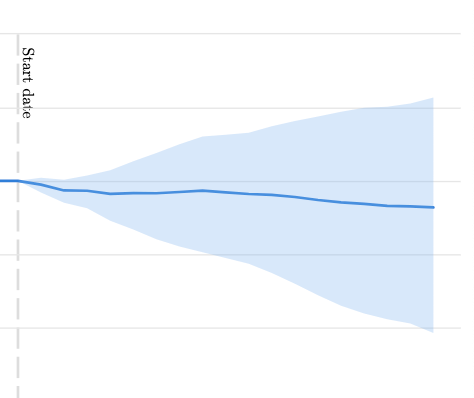
There was also no detectable impact the second time around!
Both times, the test to add authorship content resulted in no detectable impact to organic traffic.
While Google may want to measure authorship and use it to evaluate a page against E-A-T metrics, there might be a difference between how useful author information is to users vs. how well it is captured in algorithmic benefits. Whether that is true or not for this test, this is another perfect example of when test results don’t meet our expectations, which is why testing is so valuable. This also doesn’t mean authorship content won’t be valuable for other sites, so if you have the opportunity we encourage testing out this idea!
If you want to learn more about how you can use SearchPilot to gain SEO A/B testing insights, feel free to get in touch for more information or a demo. You can also sign up for our case study newsletter to stay up to date on our latest findings.
How our SEO split tests work
The most important thing to know is that our case studies are based on controlled experiments with control and variant pages:
- By detecting changes in performance of the variant pages compared to the control, we know that the measured effect was not caused by seasonality, sitewide changes, Google algorithm updates, competitor changes, or any other external impact.
- The statistical analysis compares the actual outcome to a forecast, and comes with a confidence interval so we know how certain we are the effect is real.
- We measure the impact on organic traffic in order to capture changes to rankings and/or changes to clickthrough rate (more here).
Read more about how SEO testing works or get a demo of the SearchPilot platform.
